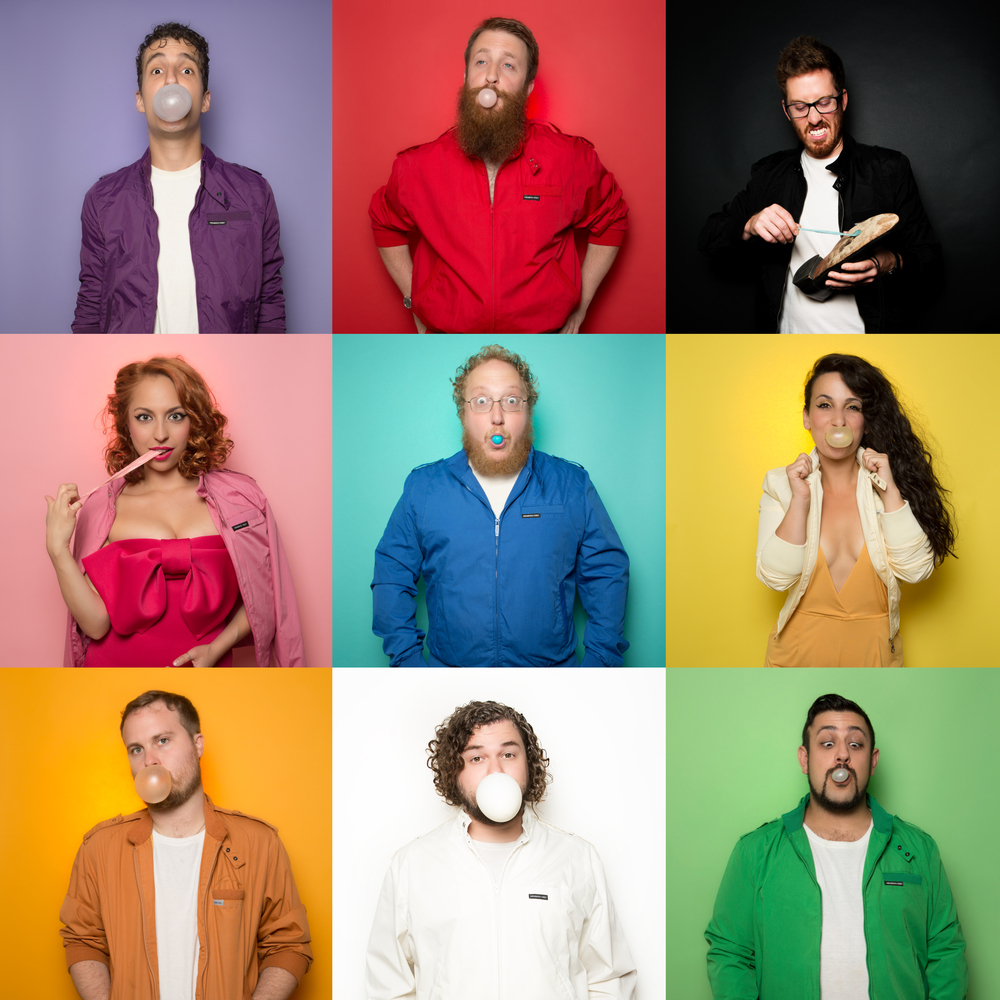Spotlight: Turkuaz

Photo: Dani Brandwein
It is a chilly September night when the members of Turkuaz take the stage for the first night of a two-show run at New York’s Brooklyn Bowl. Dressed in vibrant outfits that recall the glam late-‘70s, the group charges through a set of high-energy funk that feels heavily indebted to that era’s funk and disco sounds, as lead singer and guitarist Dave Brandwein wails on his Gibson Firebird and the horn section swells.
The nine-piece, Brooklyn, N.Y.-based outfit has steadily worked the jam and groove circuits since forming out of Boston’s prestigious Berklee College of Music scene in 2008. Along with brother band Dopapod, the group has helped anchor a new generation of improv-leaning acts who are leapfrogging around the modern indie-jam scene with the old-school H.O.R.D.E. mentality of never-ending tours, constant collaborations and wide-ranging covers. (They put their horns to good use on a tribute to Joe Cocker’s Mad Dogs & Englishmen a few years ago.)
After barnstorming clubs for years, Turkuaz have recently cemented a true national fanbase—thanks to wellreceived festival appearances at High Sierra, All Good, Disc Jam, Gathering of the Vibes and Catskill Chill—and that excitement culminated with their fifth studio album, Digitonium, which dropped in early October.
“A lot of the funk bands on the scene don’t provide as much of an emphasis on original songs and vocals,” Brandwein explains, pointing to the group’s powerful female singers, Sammi Garett and Shira Elias, who are known for their beautiful harmonies, playful dance moves and eccentric outfits. “It’s been part of our idea for the band since the beginning.”
Turkuaz’s members have always had a grand vision. Brandwein founded the nonet with bass player Taylor Shell while still in college, and, over time, their roster grew to include Garett, Elias, trumpeter/keyboardist Chris Brouwers, tenor saxophonist Greg Sanderson, baritone saxophonist/vocalist Josh Schwartz, guitarist/keyboardist Craig Brodhead and drummer Michelangelo “Mikey” Carubba. Early on, Turkuaz shared the same pool of musicians with Dopapod and a few other Berklee projects, but over time the ensemble honed in on their own carefully defined sound and style.
Though Brandwein functions as the band’s creative director, Turkuaz is still a highly collaborative project, and he looks at Digitonium as a true band statement. “It’s way easier to write an album as a group, learn how to perform the material and then record the songs,” he says of their past approach.
“But easier isn’t necessarily better,” Brandwein continues. “With Digitonium, we did the complete opposite. Other than a few songs we had been playing live, we had no regard for what the live arrangements would sound like going into the studio. We hadn’t even played most of these songs live. We totally pieced it together, and it’s the best album we’ve done. This time, the hard part has been learning to play them live and realizing I have nine guitar parts on one song, and I need to figure out how to make that sound with one guitar.”
More so than many of their peers, Turkuaz heavily emphasize the visual aspect of their concerts. In addition to their impressive light show, the band regularly polishes off their performances with colorful attire and choreographed dance routines. Brandwein’s wife, Dani, oversees those visuals—right down to ordering the nine Members Only jackets for their current stage show— and works with the band members individually to ensure each of their looks remains fresh and in line with their shifting sonic palette.
For their Stereochrome EP release in 2015, Turkuaz utilized a black-and-white motif in accordance with the “stereochrome” theme. Their microphones, merch and even their website went black and white until Digitonium’s rollout, when everything switched back to color. Brandwein hopes that at least a few people noticed.
“It helps set us apart from everyone else,” says Carubba, who also says that the band has always had a pretty “classy” dress code for their performances. “People see it and they think, ‘Well, if they’re down to rage, then I probably should be, too.’” Despite just releasing Digitonium, the members of Turkuaz already have an eye on their next studio project, which they hope to start working on before the end of the year. They will also add another feather in their cap when they co-headline Worcester, Mass.’s Palladium, a famed jam-scene venue, on New Year’s Eve as part of The Balldrop.
“Through our persistence and by staying true to our own voice, we’ve cut out a niche that no one else has been doing,” Carubba says backstage at the Bowl. “We have this cool freedom and ability to do what we want and, hopefully, our fans trust us. It’s cool to be in a position where you don’t feel like you’re under anyone’s shadow, and you don’t feel like you’re copying anybody else’s music. We are lucky that our music comes across as uniquely Turkuaz.”
And, above all else, Brandwein still takes pleasure in the collaborative process. “Having a group of people who are all thinking about something, all caring about it?” he says rhetorically. “That’s an artistic endeavor.”



















